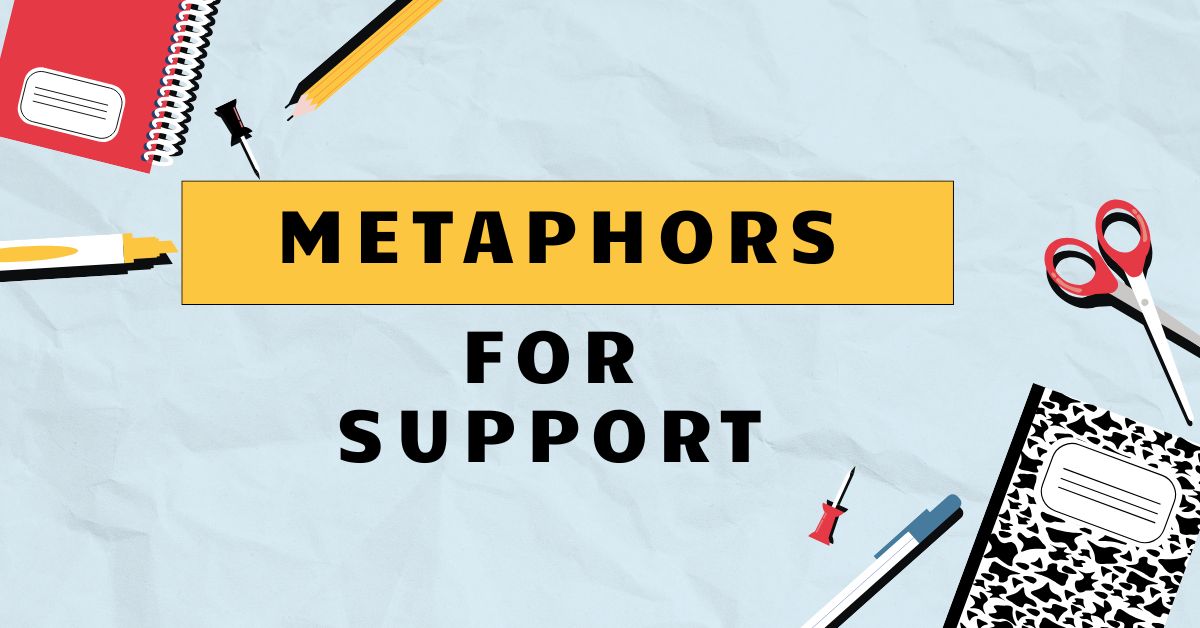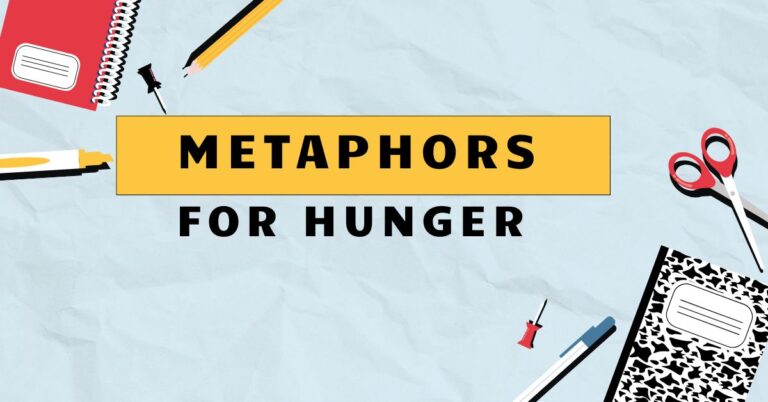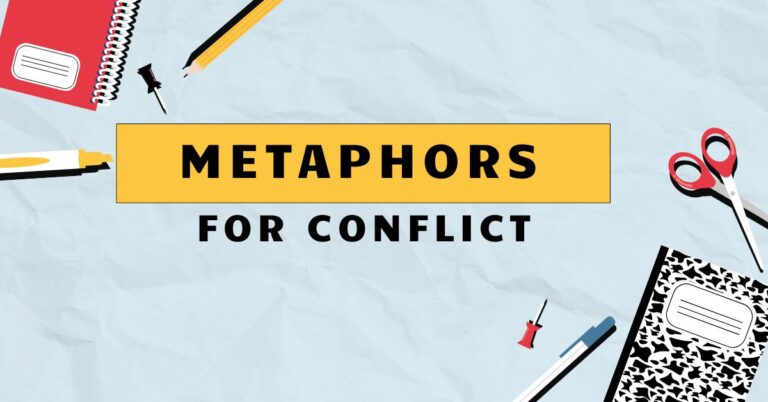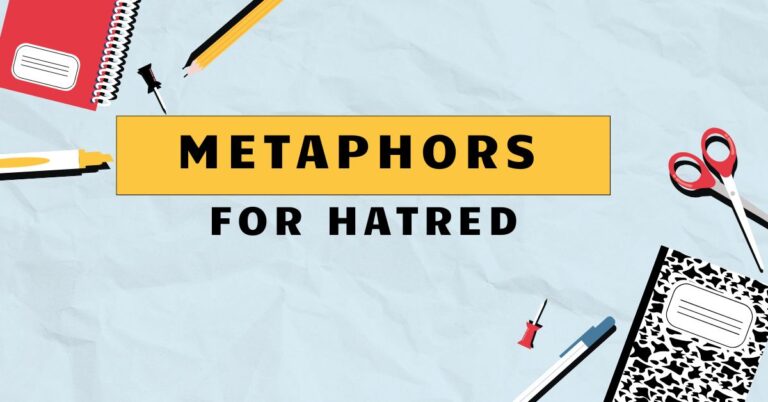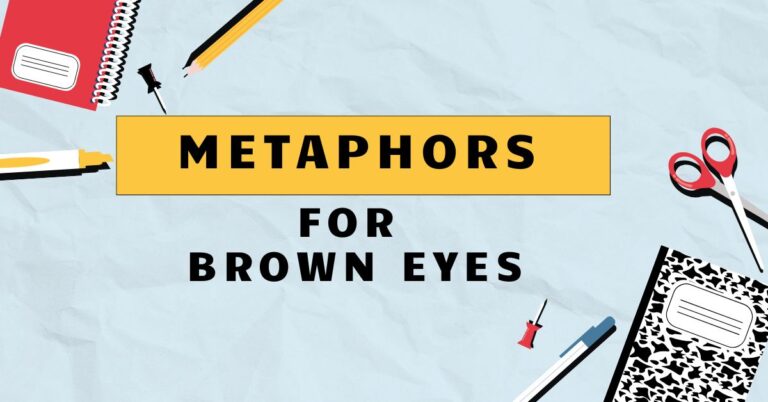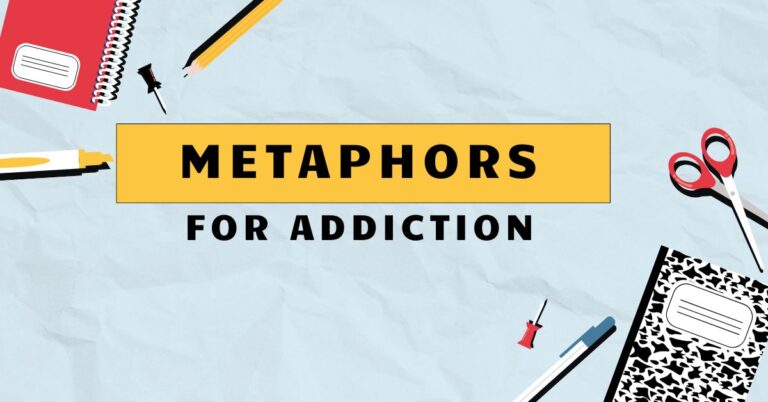43 Metaphors for Support: Enhancing Understanding
Metaphors are powerful tools in the English language, allowing us to convey complex ideas and emotions by drawing comparisons between seemingly unrelated things. When used to describe support, metaphors can add depth, nuance, and vividness to our communication.
Understanding these metaphors not only enriches our comprehension of the language but also enhances our ability to express ourselves more effectively. This article explores the diverse range of metaphors used to describe support, their structural elements, and practical applications.
This guide benefits students, writers, and anyone looking to enhance their understanding and use of metaphorical language.
Table of Contents
- Introduction
- Definition of Metaphors for Support
- Structural Breakdown
- Types and Categories
- Examples
- Usage Rules
- Common Mistakes
- Practice Exercises
- Advanced Topics
- FAQ
- Conclusion
Definition of Metaphors for Support
A metaphor is a figure of speech that directly compares two unrelated things, asserting that one thing *is* another to highlight shared qualities or create a vivid image. Metaphors for support, specifically, use this comparison to describe the act of providing assistance, encouragement, or resources to someone or something.
These metaphors function by transferring characteristics from a concrete source domain (e.g., physical structures) to the abstract target domain of support. This transfer helps make the concept of support more tangible and understandable.
The function of metaphors for support is multifaceted. They can emphasize the strength, reliability, or nurturing aspect of support.
They can also highlight the impact of support on the recipient, illustrating how it lifts them up, stabilizes them, or helps them grow. The context in which these metaphors are used greatly influences their interpretation.
For example, a metaphor used in a business context might emphasize strategic backing, while one used in a personal context might highlight emotional bolstering.
Structural Breakdown
Metaphors for support, like all metaphors, consist of two primary elements: thesource domainand thetarget domain. The source domain is the concrete concept from which the metaphorical language is drawn, while the target domain is the abstract concept being described.
In the case of support metaphors, the target domain is always “support,” while the source domain can vary widely. Common source domains include physical structures (e.g., pillars, foundations), natural elements (e.g., anchors, life rafts), and nurturing actions (e.g., cradling, bolstering).
The effectiveness of a support metaphor depends on the clear connection between the source and target domains. The shared characteristics must be evident and relevant to the intended meaning.
For example, when we say someone is a “pillar of strength,” we are drawing on the source domain of a physical pillar, which is known for its stability, height, and load-bearing capacity. These qualities are then transferred to the target domain of a person who provides unwavering support and stability to others.
Consider the metaphor, “Her encouragement was a lifeline.” The source domain is alifeline, a rope thrown to rescue someone in danger. The target domain isencouragement.
The shared characteristic is rescue or critical assistance. The metaphor suggests that her encouragement provided crucial help during a difficult time, just as a lifeline saves someone from drowning.
Types and Categories
Metaphors for support can be categorized based on the type of support they describe. Understanding these categories can help you choose the most appropriate and effective metaphor for your specific context.
Physical Support Metaphors
These metaphors draw on images of physical structures or objects that provide stability or elevation. They often emphasize the tangible nature of support and its ability to prevent collapse or failure.
Examples include: “foundation,” “pillar,” “backbone,” “scaffolding,” and “crutch.” These metaphors are frequently used in contexts where physical infrastructure or tangible resources are crucial.
Emotional Support Metaphors
Emotional support metaphors focus on the nurturing, comforting, and encouraging aspects of support. They often use imagery related to warmth, safety, and connection.
Examples include: “shoulder to cry on,” “safe harbor,” “comfort blanket,” “listening ear,” and “ray of sunshine.” These metaphors are commonly used in personal relationships, therapy, and contexts where emotional well-being is paramount.
Intellectual Support Metaphors
These metaphors highlight the role of support in fostering learning, growth, and understanding. They often draw on images of guidance, enlightenment, and mental stimulation.
Examples include: “guiding light,” “sounding board,” “intellectual springboard,” “mentor,” and “knowledge base.” These metaphors are frequently used in academic, professional, and creative contexts.
Financial Support Metaphors
Financial support metaphors describe the assistance provided through monetary resources or investments. They often use imagery related to wealth, stability, and growth.
Examples include: “financial lifeline,” “economic backbone,” “funding stream,” “venture capital,” and “seed money.” These metaphors are commonly used in business, economics, and philanthropy.
Abstract Support Metaphors
Abstract support metaphors encompass more general or intangible forms of assistance, such as moral support, advocacy, or political backing. They often use imagery related to strength, solidarity, and empowerment.
Examples include: “moral compass,” “ally,” “voice of support,” “wind beneath my wings,” and “shield.” These metaphors are used across various contexts to describe non-material forms of support.
Examples
The following tables provide extensive examples of metaphors for support, organized by category. Each example is accompanied by a brief explanation of its meaning and context.
Physical Support Examples
The table below provides examples of physical support metaphors. These metaphors use concrete images of structures and objects to illustrate different aspects of support, such as stability, strength, and elevation.
| Metaphor | Explanation | Context |
|---|---|---|
| The foundation of our success | Highlights the fundamental and essential nature of support. | Business, project management |
| A pillar of the community | Emphasizes the strength and reliability of a person or organization. | Community service, leadership |
| The backbone of the team | Highlights the essential role of support in maintaining structure and function. | Teamwork, sports |
| Scaffolding for learning | Illustrates temporary support that helps someone reach a higher level. | Education, skill development |
| A crutch to lean on | Emphasizes the temporary assistance provided during a period of weakness or injury. | Recovery, rehabilitation |
| The bedrock of our relationship | Stresses the solid and unwavering nature of the support. | Personal relationships, partnerships |
| A load-bearing wall | Highlights the ability to withstand pressure and provide stability. | Project management, crisis situations |
| The keystone of the project | Emphasizes the crucial role of support in holding everything together. | Construction, project management |
| An anchor in the storm | Illustrates the stabilizing effect of support during a turbulent time. | Personal struggles, crises |
| A solid platform to build on | Highlights the opportunity for growth and development that support provides. | Career advancement, personal growth |
| The buttress against failure | Emphasizes the protective and preventative nature of support. | Risk management, project planning |
| The scaffolding of her argument | Describes the structure and logical framework supporting an argument. | Debate, academic writing |
| A ramp to success | Illustrates how support provides an easier path to achieve goals. | Career advancement, education |
| The linchpin of the organization | Highlights the essential element that holds the entire structure together. | Business, team dynamics |
| The cornerstone of our strategy | Emphasizes the fundamental importance of support in achieving strategic goals. | Business strategy, planning |
| A retaining wall for progress | Illustrates how support prevents setbacks and maintains forward momentum. | Project management, personal development |
| The underpinnings of the system | Highlights the hidden but crucial support that keeps the system functioning. | Infrastructure, technology |
| A launching pad for innovation | Emphasizes how support enables new ideas and ventures to take off. | Research and development, startups |
| The ballast that keeps us steady | Illustrates how support provides stability and prevents capsizing. | Team dynamics, crisis management |
| The guy wires holding it all up | Highlights the subtle but essential support that maintains stability. | Project management, team dynamics |
| His advice was the ladder I climbed. | Illustrates how guidance facilitates upward progress. | Mentorship, career advancement |
| She was the bridge over troubled waters. | Emphasizes how someone helps navigate difficult situations. | Personal support, crisis intervention |
| He provided the harness for her to soar. | Illustrates how support enables freedom and achievement. | Mentorship, personal development |
| The team’s effort was the fulcrum of their success. | Highlights how collective support provides leverage for achievement. | Teamwork, project completion |
| Her presence was the safety net beneath the trapeze artist. | Emphasizes how support minimizes risks during challenging endeavors. | Risk management, performance |
Emotional Support Examples
The table below provides examples of emotional support metaphors. These metaphors use imagery related to comfort, warmth, and safety to illustrate the nurturing aspects of support.
| Metaphor | Explanation | Context |
|---|---|---|
| A shoulder to cry on | Emphasizes the comfort and empathy provided during times of sadness. | Personal relationships, friendship |
| A safe harbor in the storm | Illustrates the refuge and protection offered during turbulent times. | Personal struggles, crises |
| A comfort blanket | Highlights the sense of security and reassurance provided by support. | Anxiety, stress management |
| A listening ear | Emphasizes the importance of attentive and non-judgmental support. | Counseling, therapy |
| A ray of sunshine | Illustrates the positive and uplifting effect of support. | Depression, low morale |
| A warm embrace | Highlights the comforting and affectionate nature of support. | Grief, loneliness |
| A gentle hand to hold | Emphasizes the guiding and reassuring presence of support. | Fear, uncertainty |
| A soothing balm | Illustrates the healing and calming effect of support. | Trauma, emotional distress |
| A beacon of hope | Highlights the optimism and encouragement provided during difficult times. | Despair, hopelessness |
| A wellspring of compassion | Emphasizes the deep and unwavering empathy offered by support. | Suffering, adversity |
| An emotional life raft | Illustrates the rescue and stability provided during emotional crises. | Panic attacks, severe stress |
| A heart full of understanding | Emphasizes the empathetic and accepting nature of support. | Personal relationships, counseling |
| A haven of peace | Highlights the tranquility and security offered by support. | Stress, anxiety |
| A source of strength | Illustrates the empowering and resilient aspect of support. | Challenges, obstacles |
| A hand to lift you up | Emphasizes the encouragement and assistance provided to overcome difficulties. | Discouragement, setbacks |
| A voice of encouragement | Highlights the motivating and inspiring nature of support. | Doubt, fear |
| A presence of calm | Illustrates the soothing and stabilizing effect of support. | Anxiety, panic |
| A spirit of generosity | Emphasizes the selfless and caring nature of support. | Helping others, altruism |
| A reservoir of patience | Highlights the tolerance and understanding offered by support. | Difficult situations, frustration |
| A light in the darkness | Illustrates the hope and guidance provided during times of despair. | Depression, hopelessness |
| Her friendship was a warm blanket on a cold night. | Emphasizes the comfort and security provided by friendship. | Loneliness, sadness |
| His kindness was the sunshine after a storm. | Illustrates the positive and uplifting effect of kindness. | Recovery, healing |
| She offered her support like a gentle rain to a parched land. | Emphasizes the nurturing and life-giving nature of support. | Emotional exhaustion, stress |
| He was my anchor in the turbulent sea of emotions. | Illustrates the stability and grounding provided by someone during emotional turmoil. | Anxiety, panic |
| Her words were the bridge that connected me to hope. | Emphasizes how communication and empathy can restore hope. | Despair, hopelessness |
Intellectual Support Examples
The table below provides examples of intellectual support metaphors. These metaphors use images of guidance, enlightenment, and mental stimulation to illustrate the role of support in fostering learning and growth.
| Metaphor | Explanation | Context |
|---|---|---|
| A guiding light | Emphasizes the direction and clarity provided by intellectual support. | Mentorship, education |
| A sounding board | Illustrates the opportunity to test ideas and gain feedback through discussion. | Brainstorming, problem-solving |
| An intellectual springboard | Highlights how support can propel someone to new levels of understanding. | Research, innovation |
| A mentor | Emphasizes the guidance and wisdom provided by an experienced advisor. | Career development, skill-building |
| A knowledge base | Illustrates the comprehensive information and resources available through support. | Research, learning |
| A catalyst for learning | Highlights how support accelerates the learning process. | Education, training |
| A compass for navigating complexity | Emphasizes the direction and clarity provided in complex situations. | Problem-solving, decision-making |
| A map for understanding | Illustrates the structured and organized approach to learning provided by support. | Education, research |
| A lens for clarity | Highlights how support can sharpen focus and improve understanding. | Analysis, interpretation |
| A mirror for reflection | Emphasizes the opportunity for self-assessment and improvement provided by support. | Personal development, coaching |
| A key to unlocking potential | Illustrates how support enables someone to realize their full capabilities. | Talent development, career advancement |
| A bridge to new ideas | Emphasizes how support facilitates access to new information and perspectives. | Innovation, research |
| A spark of inspiration | Illustrates how support ignites creativity and motivation. | Art, innovation |
| A foundation of knowledge | Highlights the essential and fundamental understanding provided by support. | Education, training |
| A fertile ground for ideas | Emphasizes how support fosters the growth and development of new ideas. | Innovation, research |
| A lens to focus the mind | Illustrates how support helps to concentrate and deepen understanding. | Study, analysis |
| A springboard for creativity | Highlights how support launches new creative endeavors. | Art, design |
| A wellspring of wisdom | Emphasizes the deep and abundant knowledge provided by support. | Mentorship, guidance |
| A magnifying glass on detail | Illustrates how support helps to examine and understand intricate details. | Research, analysis |
| A telescope for the future | Highlights how support provides a long-term perspective and vision. | Strategic planning, innovation |
| His teachings were the compass guiding her through the maze of knowledge. | Emphasizes how mentorship provides direction and clarity. | Education, mentorship |
| Her feedback was the whetstone that sharpened his intellect. | Illustrates how constructive criticism enhances mental acuity. | Critique, improvement |
| His guidance was the map that led her to intellectual discovery. | Emphasizes how mentorship provides a pathway to new understanding. | Mentorship, exploration |
| She was the lighthouse illuminating the dark corners of his mind. | Illustrates how support brings clarity and understanding. | Education, self-discovery |
| His support was the fertilizer that helped her ideas blossom. | Emphasizes how support encourages growth and development. | Creativity, innovation |
Financial Support Examples
The table below provides examples of financial support metaphors. These metaphors use images related to wealth, stability, and growth to illustrate the assistance provided through monetary resources or investments.
| Metaphor | Explanation | Context |
|---|---|---|
| A financial lifeline | Emphasizes the critical and life-saving nature of financial support. | Bankruptcy, financial crisis |
| An economic backbone | Highlights the essential role of financial support in maintaining stability. | Economic development, infrastructure |
| A funding stream | Illustrates the continuous and reliable flow of financial resources. | Research, development |
| Venture capital | Emphasizes the investment in new and potentially high-growth ventures. | Startups, innovation |
| Seed money | Highlights the initial investment that enables a project or business to start. | Startups, small businesses |
| A financial safety net | Illustrates the protection against economic hardship provided by support. | Unemployment, poverty |
| An investment in the future | Emphasizes the long-term benefits of financial support. | Education, research |
| A treasure chest of resources | Highlights the abundance and value of financial support. | Development, innovation |
| A financial bridge | Illustrates the temporary assistance provided to overcome a financial gap. | Transitions, crises |
| A source of revenue | Emphasizes the income generated through financial support. | Nonprofits, organizations |
| A financial cushion | Illustrates the buffer against unexpected expenses provided by support. | Savings, investments |
| An injection of capital | Highlights the boost provided to a business or project through financial support. | Growth, expansion |
| The grant was the fuel that powered the research project. | Emphasizes how funding drives progress. | Scientific research, academic projects |
| The loan was the bridge over their financial troubles. | Illustrates how borrowed money can provide temporary relief. | Debt management, personal finance |
| Her inheritance was a golden parachute, ensuring a soft landing. | Emphasizes how inherited wealth provides security. | Estate planning, financial security |
| Their investment was the seed that grew into a successful company. | Illustrates how initial funding leads to business growth. | Startups, venture capital |
| The sponsorship was the wind in the sails of the event. | Emphasizes how funding propels an event forward. | Event planning, fundraising |
| Their donation was a drop in the bucket, but it helped. | Acknowledges the small but meaningful impact of each contribution. | Philanthropy, fundraising |
| His savings were the anchor in the storm, preventing financial ruin. | Highlights the importance of savings for stability. | Financial planning, crisis management |
| The financial assistance was the blood transfusion needed to save the company. | Emphasizes the critical and revitalizing effect of financial support. | Business turnaround, economic recovery |
Abstract Support Examples
The table below provides examples of abstract support metaphors. These metaphors use images related to strength, solidarity, and empowerment to illustrate non-material forms of assistance.
| Metaphor | Explanation | Context |
|---|---|---|
| A moral compass | Emphasizes the guidance and direction provided by ethical support. | Decision-making, leadership |
| An ally in the struggle | Illustrates the solidarity and partnership offered during difficult times. | Activism, advocacy |
| A voice of support | Highlights the advocacy and encouragement provided through communication. | Campaigns, movements |
| The wind beneath my wings | Emphasizes the empowering and uplifting nature of support. | Personal achievement, encouragement |
| A shield against adversity | Illustrates the protection and defense provided by support. | Challenges, obstacles |
| A beacon of hope | Highlights the inspiration and optimism provided during dark times. | Despair, hopelessness |
| A pillar of strength | Emphasizes the resilience and unwavering support provided by someone. | Crises, challenges |
| A bridge of understanding | Illustrates the connection and empathy fostered through support. | Relationships, communication |
| A hand of friendship | Emphasizes the camaraderie and assistance provided through support. | Collaboration, teamwork |
| A source of inspiration | Highlights the motivation and creativity sparked by support. | Innovation, art |
| A catalyst for change | Illustrates how support accelerates progress and improvement. | Activism, reform |
| A foundation of trust | Emphasizes the essential role of trust in providing effective support. | Relationships, partnerships |
| Her belief in me was the fuel that drove me forward. | Emphasizes how confidence inspires action. | Motivation, self-esteem |
| His encouragement was the lighthouse guiding me through the fog. | Illustrates how encouragement provides clarity and direction. | Discouragement, uncertainty |
| Her presence was the armor that protected him from criticism. | Emphasizes how support shields against negativity. | Resilience, self-confidence |
| His advice was the map that charted a course to success. | Illustrates how guidance provides a pathway to achievement. | Career planning, goal setting |
| Her empathy was the bridge that connected them during conflict. | Emphasizes how understanding fosters communication. | Conflict resolution, relationship building |
| His faith in her was a silent anthem of encouragement. | Illustrates the power of unspoken belief and support. | Motivation, personal growth |
| Her validation was the life vest that kept him afloat during the crisis. | Emphasizes the importance of affirmation during difficult times. | Mental health, crisis intervention |
| His mentorship was the scaffolding on which she built her career. | Highlights the structural support provided by mentorship. | Career advancement, skill development |
Usage Rules
When using metaphors for support, it is crucial to ensure that the comparison is clear, relevant, and appropriate for the context. Avoid mixed metaphors, which combine incongruous images and create confusion.
For example, “He was a pillar of strength, but his ideas were a house of cards” is a mixed metaphor because it combines the image of a solid pillar with the image of a fragile house of cards.
Consider your audience when choosing a metaphor. A metaphor that is easily understood by one audience may be confusing to another.
Use metaphors that are familiar and resonate with your intended readers or listeners. For example, if you’re addressing a technical audience, a metaphor related to engineering or technology might be more effective than one related to nature or art.
Ensure that the metaphor accurately reflects the type and nature of the support being described. A metaphor that exaggerates or misrepresents the support can be misleading or even offensive.
For example, describing a small act of kindness as “a Herculean effort” would be an overstatement and might undermine the sincerity of the support.
Additionally, be mindful of cultural differences in metaphorical language. A metaphor that is common and accepted in one culture may be unfamiliar or have different connotations in another.
Research and sensitivity are essential to avoid miscommunication or cultural insensitivity.
Common Mistakes
One common mistake is using clichés or overused metaphors. While these metaphors may be easily understood, they lack originality and impact.
Instead of saying “He was my rock,” try to find a more unique and vivid way to describe the support he provided.
Another common mistake is using metaphors that are too abstract or convoluted. If the connection between the source and target domains is not clear, the metaphor will fail to convey its intended meaning.
For example, saying “Her support was a fractal dimension of possibility” is likely to be confusing and ineffective.
Mixing metaphors is another frequent error. This occurs when you combine two or more metaphors that do not logically fit together, creating a nonsensical image.
For example, “He was a guiding light, but he also dropped the ball” combines the image of a helpful beacon with the image of failure, resulting in a confusing and contradictory statement.
Here are some examples of common mistakes:
| Incorrect | Correct | Explanation |
|---|---|---|
| He was a rock in the storm and a feather in the wind. | He was a rock in the storm. | Avoid mixing contradictory metaphors. |
| Her support was a labyrinth of opportunity. | Her support opened doors to new opportunities. | Use clear and relatable imagery. |
| His advice was a diamond in the rough, but it also fell on deaf ears. | His advice was a diamond in the rough. | Avoid combining unrelated metaphors. |
| Their contribution was a drop in the bucket that filled the ocean. | Their contribution, though small, made a significant difference. | Ensure the metaphor’s scale matches the situation. |
Practice Exercises
Complete the following sentences by filling in the blank with an appropriate metaphor for support.
| Question | Answer |
|---|---|
| 1. Her encouragement was a _______ during my darkest hours. | beacon of hope |
| 2. His mentorship served as a _______ for my career growth. | guiding light |
| 3. Their friendship was a _______ during the difficult transition. | safe harbor |
| 4. The funding provided a _______ for the struggling business. | financial lifeline |
| 5. Her unwavering belief in me was the _______ that kept me going. | wind beneath my wings |
| 6. The team’s collaboration was the _______ of the project’s success. | backbone |
| 7. His advice was the _______ I needed to make the right decision. | moral compass |
| 8. Their support acted as a _______ against the challenges we faced. | shield |
| 9. The training program was designed as _______ for new employees. | scaffolding |
| 10. Her empathy was a _______ that helped us understand each other better. | bridge |
Rewrite the following sentences using a metaphor for support.
| Question | Answer |
|---|---|
| 1. He provided unwavering support during the crisis. | He was a pillar of strength during the crisis. |
| 2. Her guidance helped me navigate the complex situation. | Her guidance was the compass that helped me navigate the complex situation. |
| 3. The financial assistance enabled the company to survive. | The financial assistance was a lifeline that saved the company. |
| 4. Their encouragement motivated me to pursue my goals. | Their encouragement was the wind beneath my wings, inspiring me to pursue my goals. |
| 5. The collaboration strengthened the team’s performance. | The collaboration was the backbone that strengthened the team’s performance. |
| 6. Her belief in me boosted my confidence. | Her belief in me was the fuel that ignited my confidence. |
| 7. His mentorship helped her climb the ranks. | His mentorship was the ladder she climbed to success. |
| 8. Their support helped her overcome obstacles. | Their support was the bridge over her troubled waters. |
| 9. The funding helped the project take off. | The funding was the rocket fuel that launched the project. |
| 10. The community rallied to provide assistance during the flood. | The community was an anchor in the flood, providing stability. |
Advanced Topics
At an advanced level, explore the use of extended metaphors for support, where a single metaphor is developed and sustained throughout a longer passage. This technique can create a powerful and cohesive image, but it requires careful planning and execution to avoid becoming strained or confusing.
For example, you might compare a mentorship program to a garden, with the mentor acting as the gardener, the mentees as the plants, and the resources as the fertilizer. This metaphor could be extended throughout an entire article or
speech.
Delve into the cultural and historical context of support metaphors. Different cultures may have unique metaphors for support that reflect their values and traditions.
Understanding these cultural nuances can enhance your ability to communicate effectively with diverse audiences. For example, some cultures may use metaphors related to family or community to describe support, while others may use metaphors related to individual strength or resilience.
Examine the use of support metaphors in literature, poetry, and rhetoric. Analyze how authors and speakers use metaphors to create vivid images, evoke emotions, and persuade their audiences.
Pay attention to the specific metaphors they choose, the context in which they are used, and the overall effect they create. For example, Shakespeare’s plays are rich with metaphorical language, and studying his use of metaphors for support can provide valuable insights into the art of communication.
Study the cognitive science behind metaphors and how they shape our understanding of abstract concepts like support. Research how metaphors activate different regions of the brain and influence our perceptions, emotions, and behaviors.
This interdisciplinary approach can deepen your appreciation of the power and complexity of metaphorical language.
FAQ
What is the difference between a metaphor and a simile?
A metaphor directly equates two things (e.g., “He is a pillar of strength”), while a simile uses “like” or “as” to make a comparison (e.g., “He is as strong as a pillar”).
How can I avoid using clichés when choosing metaphors for support?
Brainstorm unique images and connections, use sensory details, and consider the specific context of the support you are describing.
Can a metaphor be too complex?
Yes, if the connection between the source and target domains is unclear or convoluted, the metaphor may be confusing and ineffective.
How do cultural differences affect the interpretation of metaphors?
Different cultures may have unique metaphors or different connotations for common metaphors, so sensitivity and research are essential.
What is an extended metaphor?
An extended metaphor is a metaphor that is developed and sustained throughout a longer passage, creating a cohesive and powerful image.
How can I ensure my metaphor is appropriate for my audience?
Consider your audience’s background, knowledge, and cultural context when choosing a metaphor.
What should I do if I accidentally mix metaphors?
Revise your writing to use consistent and logically connected imagery.
Can metaphors be used in formal writing?
Yes, but use them judiciously and ensure they enhance clarity and understanding rather than detracting from it.
Are there any online resources for finding metaphors?
Yes, websites like Metaphor Map and online thesauruses can help you find different metaphors for support.
How can I improve my ability to create effective metaphors?
Practice writing regularly, read widely, and pay attention to the metaphors used by skilled writers and speakers.
Conclusion
Metaphors for support are powerful tools for enhancing understanding, evoking emotions, and adding vividness to our communication. By understanding the structural elements, types, and usage rules of these metaphors, you can effectively express the nuances of support in various contexts.
Avoid common mistakes, practice using metaphors regularly, and explore advanced topics to deepen your mastery of this essential aspect of language. Whether you are a student, writer, or communicator, mastering metaphors for support will enrich your ability to connect with others and convey complex ideas with clarity and impact.
Embrace the creativity and expressiveness of metaphorical language to transform your communication and inspire those around you.

